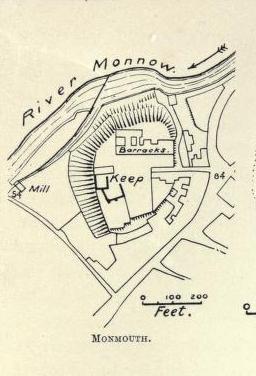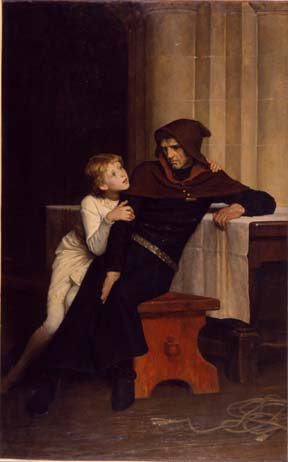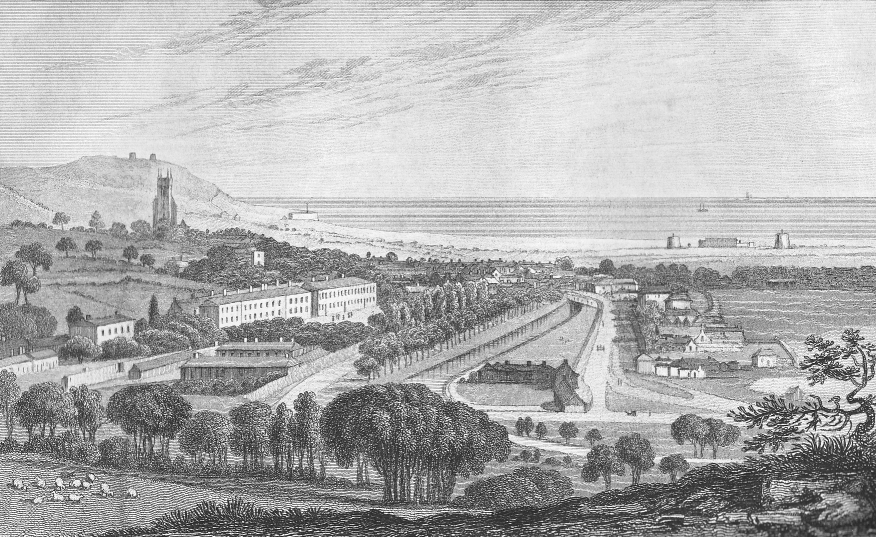|
Baldwin III, Count Of Guînes
Baldwin III, Count of Guînes (1198–1244) was a Flemish nobleman. He inherited the war-torn County of Guînes, now in northern France, while Philip II of France was still on the throne and suffered the repercussions of Philip's expansion of the French state. He is now best known as a mercenary leader in the Welsh Marches, employed by Henry III of England in 1233–1234; the family connections with properties held in England was longstanding. Early life Baldwin () was the son of Arnoul II, Count of Guînes and Beatrix of Bourbourg, born at Ardres about 1198. Beatrix and her husband were on opposite sides during the War of Bouvines, or at least at cross purposes. The period saw multiple invasions of the County, in particular from Renaud I, Count of Dammartin, and heavy damage from Philip II of France, to whom Arnoul was allied. Beatrix took Baldwin to Flanders about 1214; later he was able to effect a reconciliation with his father. Baldwin succeeded his father Arnoul II in 12 ... [...More Info...] [...Related Items...] OR: [Wikipedia] [Google] [Baidu] |
County Of Guînes
The County of Guînes, was a Flemish fief and later French fief in the Middle Ages. The county was split from the County of Boulogne in about 988. Though dominated by the larger county of Flanders, it often acted independently. In 1180, Guînes was passed, together with Ardres, Arras and Saint-Omer, to the French crown as part of the dowry of Isabel of Hainaut when she married Philip II of France. Counts *?-c.965 - Siegfried, Count of Guînes **Although he never seemed to be formally designated as Count, he is historically referred to as such. *c.965-? - Ardolf, Count of Guînes * Raoul, Count of Guînes (son of Ardolf), also known as Ralph or Rodolphe * Eustace, Count of Guînes (son of Raoul) *1065-1091 - Baldwin I, Count of Guînes (son of Eustace), also known as Baudouin *1091-1137 - Robert Manasses, Count of Guînes (son of Baldwin I) *1138-1141 - Aubrey de Vere - jure uxoris *1141-1169 - Arnoul I, Count de Guînes (son of Gisela of Guînes, daughter of Baldwin I) *1 ... [...More Info...] [...Related Items...] OR: [Wikipedia] [Google] [Baidu] |
Alexander Croke
Sir Alexander Croke (July 22, 1758 – December 27, 1842) was a British judge, colonial administrator and author influential in Nova Scotia of the early nineteenth century. Life Croke was born in Aylesbury, England, to a wealthy family and attended Oriel College, Oxford, where he earned the degree of Doctor of Civil Law. He was called to the bar in 1786. Practicing maritime law, he earned a strong enough reputation for his work that in 1801 he was offered his choice of appointments to the newly established vice-admiralty courts in Nova Scotia or the West Indies. He married Alice Blake in 1796. Career Croke's bench in Nova Scotia had considerable jurisdiction: it covered all maritime cases in a colony based largely on fishing and where smuggling was commonplace. Since the population and the Assembly was highly sympathetic to smuggling, the court, which denied jury trials to the accused was unpopular. During the War of 1812, the ever-conservative Croke even found guilty mer ... [...More Info...] [...Related Items...] OR: [Wikipedia] [Google] [Baidu] |
Monmouth Castle
Monmouth Castle () is a castle close to the centre of the town of Monmouth, the county town of Monmouthshire, on a hill above the River Monnow in south-east Wales. Once an important border castle, and birthplace of Henry V of England, it stood until the English Civil War when it was damaged and changed hands three times before being slighted to prevent it being fortified again. After partial collapse in 1647, the site was reused and built over by Great Castle House, which became the headquarters and regimental museum of the Royal Monmouthshire Royal Engineers. It is a Grade I listed building and scheduled monument. Early Norman border castle Immediately after the Norman Conquest, William the Conqueror installed three of his most trusted confidants, Hugh d'Avranches, Earl of Chester, Roger of Montgomery, and William FitzOsbern, as the Earls of Chester, Shrewsbury and Hereford respectively. The earldoms served to guard the frontier and provided bases for the Norman inva ... [...More Info...] [...Related Items...] OR: [Wikipedia] [Google] [Baidu] |
Peter Des Roches
Peter des Roches (died 9 June 1238) (List of Latinised names, Latinised as ''Petrus de Rupibus'' ("Peter from the rocks")) was bishop of Winchester in the reigns of King John of England and his son Henry III of England, Henry III. He was not an Englishman, but rather a native of the Touraine, in north-central France. Biography Towards the end of Richard I of England, Richard I's reign, Peter became Lord Chamberlain and an influential counsellor. He held the ecclesiastical offices of Archdeacon of Poitiers, treasurer of Poitiers, and was a precentor of the diocese of Lincoln in 1204.British History Online Precentors of Lincoln accessed on 2 November 2007. In early 1205, through John's influence, Peter was elected to the see of Winchester.Fryde, et al. ''Handbook of Br ... [...More Info...] [...Related Items...] OR: [Wikipedia] [Google] [Baidu] |
Hubert De Burgh
Hubert de Burgh, Earl of Kent ( , ; – before 5 May 1243) was an English nobleman who served as Chief Justiciar of England (1215–1232) and Justiciar of Ireland (1232) during the reigns of King John and his son and successor King Henry III and, as Regent of England (1219–1227) during Henry's minority, was one of the most influential and powerful men in English politics in the thirteenth century. Origins Hubert de Burgh was born of unknown parents of Burgh-next-Aylsham, Norfolk. A case has been made for Hubert's father being Walter de Burgh, and his mother was named Alice. The family were minor landholders in Norfolk and Suffolk, from whom Hubert inherited at least four manors. His elder brother was William de Burgh (d. 1206), founder of the de Burgh/Burke/ Bourke dynasty in Ireland, and his younger brothers were Geoffrey ( Archdeacon of Norwich and later Bishop of Ely), and Thomas (castellan of Norwich). Appointments by King John Hubert de Burgh had entered the se ... [...More Info...] [...Related Items...] OR: [Wikipedia] [Google] [Baidu] |
Kent
Kent is a Ceremonial counties of England, ceremonial county in South East England. It is bordered by Essex across the Thames Estuary to the north, the Strait of Dover to the south-east, East Sussex to the south-west, Surrey to the west, and Greater London to the north-west. The county town is Maidstone. The county has an area of and had population of 1,875,893 in 2022, making it the Ceremonial counties of England#Lieutenancy areas since 1997, fifth most populous county in England. The north of the county contains a conurbation which includes the towns of Chatham, Kent, Chatham, Gillingham, Kent, Gillingham, and Rochester, Kent, Rochester. Other large towns are Maidstone and Ashford, Kent, Ashford, and the City of Canterbury, borough of Canterbury holds City status in the United Kingdom, city status. For local government purposes Kent consists of a non-metropolitan county, with twelve districts, and the unitary authority area of Medway. The county historically included south-ea ... [...More Info...] [...Related Items...] OR: [Wikipedia] [Google] [Baidu] |
Hythe, Kent
Hythe () is an old market town and civil parish on the edge of Romney Marsh in Kent, England. ''Hythe'' is an Old English word meaning haven or landing place. History The earliest reference to Hythe is in Domesday Book (1086) though there is evidence of the area having been settled since Roman times. The town has mediaeval and Georgian buildings, as well as a Saxon/ Norman church on the hill and a Victorian seafront promenade. Hythe was once defended by castles at Saltwood and Lympne. Hythe Town Hall, a neoclassical style building, was completed in 1794. Hythe's market once took place in Market Square (now Red Lion Square) close to where there is now a farmers' market every second and fourth Saturday of the month. Hythe has gardening, horse riding, bowling, tennis, cricket, football, squash and sailing clubs. Lord Deedes was once patron of Hythe Civic Society. As an important Cinque Port, Hythe once possessed a bustling harbour which, over the course of 300 years ... [...More Info...] [...Related Items...] OR: [Wikipedia] [Google] [Baidu] |
Newington, Shepway
Newington is a village and civil parish in the English county of Kent located north-west of Folkestone. It gives its name to Newington Parish Council, which has five councillors, and includes the hamlets of Arpinge and Beachborough. The village lies to the north of the M20 motorway and the A20 road; the Channel Tunnel The Channel Tunnel (), sometimes referred to by the Portmanteau, portmanteau Chunnel, is a undersea railway tunnel, opened in 1994, that connects Folkestone (Kent, England) with Coquelles (Pas-de-Calais, France) beneath the English Channel at ... complex is nearby. The ecclesiastical parish was known as ''Newington-next-Hythe'', the latter town being to the south-west; the parish church is dedicated to St Nicholas. Nearby there used to be a 13th-century Augustinian priory, founded in 1253 by Sir John Maunsell, who became a counsellor of King Henry III. The parish includes the hamlet of Peene which was joined to the Elham Valley Railway. Although no ... [...More Info...] [...Related Items...] OR: [Wikipedia] [Google] [Baidu] |
Stevington
Stevington is a village and civil parish in the Borough of Bedford in northern Bedfordshire, England. It is on the River Great Ouse four to five miles northwest of Bedford. Nearby villages include Bromham, Oakley, Pavenham and Turvey. West End lies northwest of the village, and forms part of the same civil parish. The village has a fine Medieval Church as well as a number of listed buildings spanning the centuries. The first church on this site was probably a wooden building constructed during the Anglo Saxon period between 886 and 1016; this was later replaced by a stone building. History The earliest surviving part of the present-day church is the lowest third of the tower which probably dates from the early 10th century. As the population and wealth of the village grew so too did the church buildings. This culminated in the fifteenth century with the raising of the church roof and the raising of a second stage to the tower. In 1872 the church was reopened after resto ... [...More Info...] [...Related Items...] OR: [Wikipedia] [Google] [Baidu] |
Bedfordshire
Bedfordshire (; abbreviated ''Beds'') is a Ceremonial County, ceremonial county in the East of England. It is bordered by Northamptonshire to the north, Cambridgeshire to the north-east, Hertfordshire to the south and the south-east, and Buckinghamshire to the west. The largest settlement is Luton (225,262), and Bedford is the county town. The county has an area of and had a population of 704,736 at the 2021 census. ''plus'' ''plus'' Its other towns include Leighton Buzzard, Dunstable, Biggleswade, Houghton Regis, and Flitwick. Much of the county is rural. For Local government in England, local government purposes, Bedfordshire comprises three Unitary authorities of England, unitary authority areas: Borough of Bedford, Bedford, Central Bedfordshire, and Luton. The county's highest point is on Dunstable Downs in the Chilterns. History The first recorded use of the name in 1011 was "Bedanfordscir", meaning the shire or county of Bedford, which itself means "Beda's ford ... [...More Info...] [...Related Items...] OR: [Wikipedia] [Google] [Baidu] |
Seneschal
The word ''seneschal'' () can have several different meanings, all of which reflect certain types of supervising or administering in a historic context. Most commonly, a seneschal was a senior position filled by a court appointment within a royal, ducal, or noble household during the Middle Ages and early Modern period – historically a steward or majordomo of a medieval great house. In a medieval royal household, a seneschal was in charge of domestic arrangements and the administration of servants, which, in the medieval period particularly, meant the seneschal might oversee hundreds of laborers, servants and their associated responsibilities, and have a great deal of power in the community, at a time when much of the local economy was often based on the wealth and responsibilities of such a household. A second meaning is more specific, and concerns the late medieval and early modern nation of France, wherein the seneschal () was also a royal officer in charge of justice a ... [...More Info...] [...Related Items...] OR: [Wikipedia] [Google] [Baidu] |




